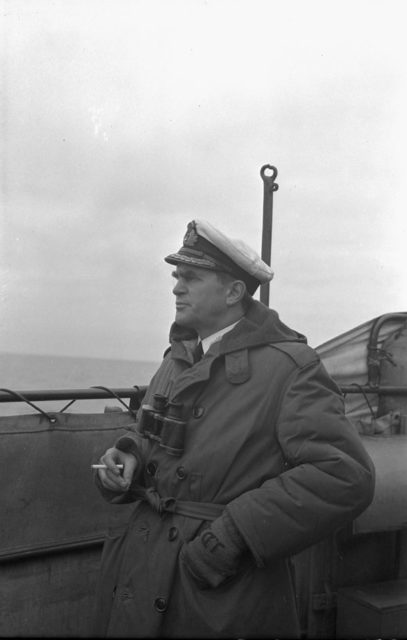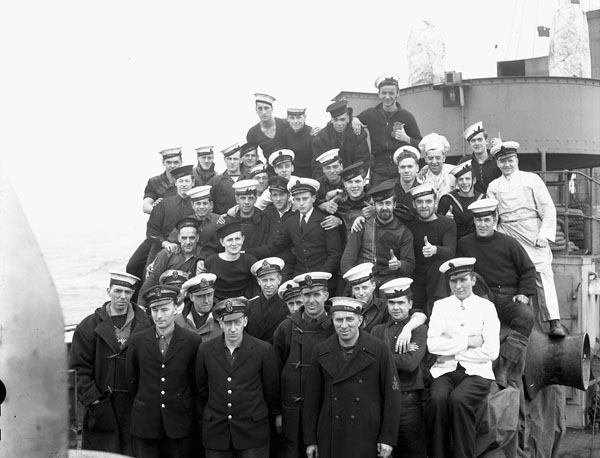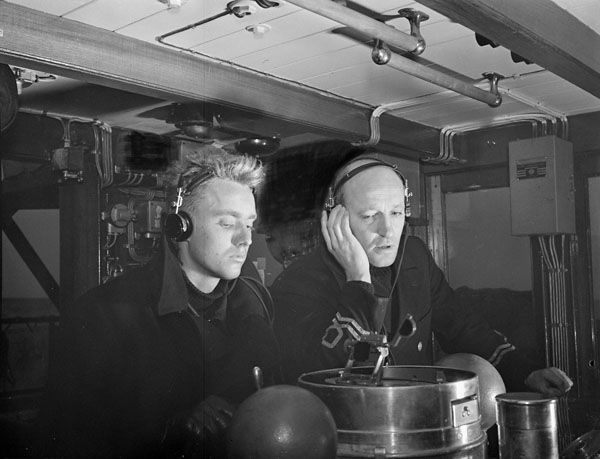Forgotten Weapons
Published on 12 Apr 2019This Bren is lot #1013 at Morphy’s April 2019 auction:
https://www.forgottenweapons.com/cana…The John Inglis company in Toronto first opened in 1859 as a metalworking shop, and grew steadily over the decades under first John Inglis, and then later his sons. Inglis did substantial amounts of military work during World War One, but the Great Depression hit it hard, and both William and Alexander Inglis died in 1935 and 1936 respectively. The company went into receivership but was purchased by one Major James Hahn (DSO) and a group of business partners in November of 1936. Hahn and his associates saw an opportunity to use this large manufacturing facility to make machine guns for the military, and they were successful – in October 1938 they were awarded a contract to make 5000 MkI Bren guns. More contracts would follow, and by the height of World War Two the company had some 15,000 employees and more than a million square feet of floor space.
Among many other projects, Inglis was contracted to make small arms for sale to the Nationalist Chinese government under Chiang Kai Shek – both High Power pistols and Bren guns in 8mm Mauser (to fit the Chinese standardization on that cartridge). A batch of 8mm ZB-30 light machine guns were brought in from the Far East to use as a pattern, and Inglis engineers were able to successfully redesign the Bren to use that cartridge and magazine.
Where the story gets hazy is in trying to determine how many were made and for whom. The Chinese guns are marked in Mandarin on the receivers, and have “CH” prefix serial numbers, like the Chinese contract High Power pistols. However, two additional variations exist without those Chinese markings. Some are marked “7.92 Bren MkI” and “Inglis 1943” (or 44 or 45), and others – like this one – are just marked “7.92 Bren MkI”. The dated ones are typically referred to as Resistance guns, intended to be supplied to European resistance units for whom 7.92mm ammunition was more readily available than .303 – although information on how many guns were supplied in this way (if any) is difficult to find. The last group is generally called “sterile”, and it is not clear what their purpose is. This particular example is one of 23 that were registered in the US in the early 1960s to Interarms, and it does appear that they were associated with some clandestine US military activities. The serial numbers of those 23 Interarms guns range from 1-5343 to 2-8045, suggesting a production of 13,000 or perhaps as many as 28,000 guns – that is quite a lot to be undocumented and missing.
Hopefully, more information will turn up in the future to shed light on the purpose and use of these 8mm Brens. We do know for sure that many thousands did go to Chinese forces, and some were brought into the UK, where in the 1960s they were used in the development of the 7.62mm NATO L4 version of the Bren.
http://www.patreon.com/ForgottenWeapons
Cool Forgotten Weapons merch! http://shop.bbtv.com/collections/forg…
Contact:
Forgotten Weapons
PO Box 87647
Tucson, AZ 85754
April 13, 2019
Canadian 8mm “Sterile” Bren Gun
Canada and the Battle of the Atlantic, part 11 by Alex Funk
Editor’s Note: This series was originally published by Alex Funk on the TimeGhostArmy forums (original URL – https://community.timeghost.tv/t/canada-and-the-battle-of-the-atlantic-part-4/1447/3).
Sources:
- Far Distant Ships, Joseph Schull, ISBN 10 0773721606 (An official operational account published in 1950, somewhat sensationalist)
[Schull’s book was published in part because the funding for the official history team had been cut and they did not feel that the RCN’s contribution to the Battle of the Atlantic should have no official recognition. It is very much an artifact of its era, and needs to be read that way. A more balanced (and weighty) history didn’t appear until the publication of No Higher Purpose and A Blue Water Navy in 2002, parts 1 and 2 of the Official Operational History of the RCN in WW2, covering 1939-1943 and 1943-1945, respectively.]- North Atlantic Run: the Royal Canadian Navy and the battle for the convoys, Marc Milner, ISBN 10 0802025447 (Written in an attempt to give a more strategic view of Canada’s contribution than Schull’s work, published 1985)
- Reader’s Digest: The Canadians At War: Volumes 1 & 2 ISBN 10 0888501617 (A compilation of articles ranging from personal stories to overviews of Canadian involvement in a particular campaign. Contains excerpts from a number of more obscure Canadian books written after the war, published 1969)
- All photos used exist in the Public Domain and are from the National Archives of Canada, unless otherwise noted in the caption.
I have inserted occasional comments in [square brackets] and links to other sources that do not appear in the original posts. A few minor edits have also been made for clarity.
Earlier parts of this series:
Part 1 — Canada’s navy before WW2
Part 2 — The Admiralty takes control
Part 3 — The professionals and the amateurs
Part 4 — 1940: The fall of France, the battle begins, and the RCN dreams of expansion
Part 5 — The RCN’s desperate need for warships
Part 6 — New ships, new challenges
Part 8 — Expansion problems: not enough men for not enough ships
Part 9 — Early-to-mid 1941, The Rocky Isle in the Ocean
Part 10 — The Newfoundland Escort Force and the Canadian corvettes
Part 11 — “Chummy” Prentice and the NEF
One of the most colourful men to serve in the Newfoundland Escort Force was Commander J.D. Prentice. He had taken early retirement from the RN in 1934 and in 1939, at age 41, he returned to sea. Marc Milner outlines Prentice’s career in North Atlantic Run:
“Chummy” Prentice, as his friends called him, was one of the real characters of the war and a driving force behind the RCN’s quest for efficiency. Born in Victoria, BC, of British parents in 1899, Prentice had decided on a naval career by the tender age of thirteen. He wanted to join the infant RCN, but his father believed that the new naval service of Canada would become little more than another avenue for political patronage. If Prentice was to join the navy it had to be the RN, so in 1912 he entered the Royal Naval College, Dartmouth, and later in the same year joined the RN as a cadet. His twenty-two years of service in the RN were undistinguished, the pinnacle had been serving as first lieutenant commander of the battleship Rodney. When passed over for promotion to commander in 1934, Prentice realized that his future in the RN was limited, and he therefore took an early retirement. He returned to BC in 1937 to take a position as financial secretary of the Western Canada Ranching Company, and there he stayed until the outbreak of war in 1939.
The RN having no immediate employment for him, Prentice was placed on the list of officers at the disposal of the RCN. When the RCN mobilized, Prentice was offered a commission at his old RN rank, an offer he eagerly accepted, and he was posted to Sydney, Cape Breton, as staff officer to the Naval Officer in Charge. Although content with his lot, Prentice was rescued from this important but otherwise colourless duty in July 1940, when he was transferred to Halifax pending the commissioning of the corvette HMCS Lévis, which he was to command. In Halifax, Prentice came in contact with Commodore L.W. Murray, then Commodore Commanding Halifax Force, whom Prentice had first met at the RN’s staff college. The two men shared many ideas and interests, and became fast and lifelong friends. Prentice soon found himself attached to Murray’s staff as Senior Officer, Canadian Corvettes [the command of Lévis went to Lieutenant Charles Gilding, RCNR]. It was a curious post, one which never fit into the organizational structure of any command and soon became little more than titular. However, it did provide Prentice with a legitimate priority of interest in the affairs of the little ships, which he was to exercise consistently over the next three years.
Murray and Prentice were separated when Murray left for Britain to take command of Canadian vessels overseas through the summer of 1940, and Prentice spent the winter of 1940-41 working up the few Canadian corvettes had been launched before the freeze up. What was to become “The Dynamic Duo” of the east coast was not to be broken up for long. March 1941 saw Prentice finally given his first command, the corvette HMCS Chambly. Milner continues:
All of this gave his fertile and often over-active imagination an opportunity for expression, for Prentice was an innovator and an original thinker. During his service in the RN he had produced numerous papers and essays for publication and competitions on a myriad of topics. Not surprisingly, he quickly developed ideas of what corvettes were capable of, how they could be used, and how their efficiency could be improved.
As a fairly senior officer in a rather junior service, one in which he had no long-standing presence or long-term ambitions, Prentice allowed his concern for efficiency to dominate his work. His combination of experience, seniority, and lack of vested service interest gave Prentice a freedom of expression which few if any other RCN officers enjoyed. By all accounts he used his position and influence wisely. In any event, Murray was always interposed between Prentice and more senior (and, one might assume, less tolerant) officers and was therefore able to direct some of the heat generated by Prentice into more useful, if not always successful, directions. In many ways Prentice was Murray’s alter ego, an energetic innovator paired to an efficient but somewhat uninspired administrator.
Prentice’s eccentricities apparently did not keep him at arm’s length from his fellow officers. More importantly, perhaps, his cigars, monocle, English accent, and sense of fairness positively endeared him to the lower decks. The story of Chummy Prentice and the monocle is probably apocryphal, but it illustrates the type of rapport he apparently had with the other ranks. It is said that once a whole division of Chambly‘s company paraded wearing monocles. Without saying a word or altering his expression Prentice completed his rounds and then took a position in front of the jesting crewmen. After a moment’s pause, and while the whole crew waited for the dressing down, Prentice threw his head back, flinging his monocle into the air. As the glass fell back he caught it between his eyebrow and the bottom lid, exactly in the place from whence it had been ejected. “When you can do that,” Prentice is reputed to have said, “you can all wear monocles.” Whether it is a true story or not, it makes the point. Prentice was an ideal commanding officer and admirably suited for the posts which he held. He was ruthless in his quest for efficiency at all levels of shipboard life, from gunnery to the welfare of the lower decks. A good measure of fairness and a well-developed sense of propriety seem to have governed his treatment of subordinates. He was, above all, enthusiastic about his work, and much of this rubbed off on those who came in contact with him. Although the RN apparently felt he had little to offer them, Prentice clearly found his calling with the small ships of the RCN.
Commander J.D. Prentice, Commanding Officer, on the bridge of the corvette HMCS Chambly at sea, 24 May 1941.
Canada. Dept. of National Defence / Library and Archives Canada / PA-151743The first task assigned to Prentice and the embryonic NEF was screening the battle-cruiser Repulse as that great ship lay in Conception Bay following the hunt for the Bismarck. Screening Repulse was good basic exercise if nothing else, and the clear, unstratified waters of the bay returned good ASDIC echoes. The real work of NEF began shortly thereafter. Pending the arrival of a Canadian commanding officer for NEF, the escorts were placed under Captain C.M.R. Schwerdt, RN, the Naval Officer in Charge, St John’s (whose establishment had in fact only just been transferred to the RCN). Schwerdt, in consultation with his trade officers, determined that NEF should attempt its first escort of an eastbound convoy in early June. The date of sailing, course, and so on could all be obtained through local trade connections, and a rendezvous with HX-129 was worked out by Schwerdt’s staff. Word-of-mouth orders were passed to Prentice advising him of this plan and of the likelihood of very poor weather. The orders, which in effect stated “If you have any reasonable hope of joining the convoy, proceed to sea.” gave Prentice the carte blanche he thrived on; foul weather only added to the challenge.
Members of the ship’s company, HMCS Chambly, St. John’s, Newfoundland, May 1941.
Canada. Dept. of National Defence / Library and Archives Canada / PA-115351On 2 June, the first NEF escort group to sail on convoy duty put to sea. The escorts Chambly, Orillia, and Collingwood rendezvoused with HX-129 within an hour of their estimated position. Although the convoy was not attacked, many stragglers and independents nearby were lost to enemy action, and the Canadians soon found themselves busy with rescue work. Two ASDIC contacts were made, one each by Collingwood and Chambly while operating in company. Unfortunately, co-ordination of searches was hampered by the failure of visual-signaling (V/S) equipment in Chambly. The latter also had to stop engines twice to repair defects. Despite the breakdowns, lost opportunities, and general mayhem of this first operation, Prentice’s spirits were extremely buoyant. “The ships behaved extremely well,” he wrote in his report of proceedings. Certainly all the COs in question, Acting Lieutenant Commander W.E.S. Briggs, RCNR, of Orillia, and Acting Lieutenant Commander W. Woods, RCNR, of Collingwood, went on to do well in the RCN. But one cannot help but feel that Prentice was writing about the corvettes themselves.
The first operation of NEF pointed to the many problems which beset the expansion fleet, and yet Prentice was pleased with the group’s performance. Having participated directly in the commission and workup of these first seven RCN corvettes, the SO, Canadian Corvettes, could be excused his pride in their initial foray into troubled waters. Other RCN officers maintained similar limited expectations of the expansion fleet. The British, on the other hand, entertained little sympathy for struggling civilian sailors. From the outset, RCN and RN officers displayed a tendency to view the expansion fleet from vastly different perspectives. To use an analogy, the RCN was, through the period of 1941-43, like half a glass of water. From the Canadian perspective the glass was half full; the RN always considered it half empty. Though the Naval Staff was apparently informed of how ill-prepared the early corvettes really were, this came as a rude shock to the more staid RN. Moreover, shortcomings manifested themselves even before the first major Canadian convoy battle.
“UN peacekeeping is a bad joke”
Ted Campbell discusses a recent report that takes Canada to task for Canadian peacekeeping efforts that don’t match those of poorer nations, especially in Africa:
I’m sorry to burst Mr. Oliphant’s bubble, but most UN peacekeeping, especially that done by Africans in Africa, is a farce. There are HUGE Afro-Asian forces deployed under the UN’s banner because, mainly, the UN pays a nation $(US)1,400+ per month for each soldier wearing a blue beret, but, the BBC reports that “Countries are paid to provide personnel to UN missions and the top countries providing troops are unrepresentatively poor. The amount countries are paid for providing those troops is considerably higher than the average wage in most of the countries sending large numbers of troops.”
In other words many (I would say most) African countries and some Asian countries send lots of poorly paid, ill-trained, unprofessional, second or third rate troops to the UN to serve as peacekeepers in what is essentially a profitable commercial transaction. Let’s use Rwanda, a country about which Mr. Oliphant knows and cares, as an example: some sources say that a Rwandan worker, on average, earns about $(CA)295.00 per month, some estimates are lower, only about $(CA)120.00 per month. Let’s guess that a typical Rwandan soldier, not one of the colonels or generals … is paid something in between those two numbers, say, at a guess, $(CA)205.00 ($(US)154.00) per month. That means that every month the Rwandan government pockets almost $(US)1,275.00 ($(US)1,428.00 – $(US)154.00) for each soldier it deploys, and, in early 2019, Rwanda has over 6,000 soldiers on UN peacekeeping duties, that means it gets over $(US)90 Million ($(CA)120+ Million) every year. In 2016/17 Canada sent about $(CA)25 Million to Rwanda in direct aid, so, for Rwanda, sending soldiers to UN peacekeeping missions garners almost five times as much money as Canada sends in aid.
Rwanda is not the biggest provider of cannon fodder peacekeepers to the UN. Ethiopia sends over 8,000 soldiers, India sends almost 7,500 (who are well trained, very well led, professionals) and Pakistan sends over 7,000 (also quite well trained) while Bangladesh (6,700+) and Rwanda (6,100+) round out the top 5 troop providing nations.
Back in the 18th century, a small and poor European nation earned significant amounts of foreign money by renting out units of its army. Americans may remember the Hessians, although I suspect few of them knew anything more about them than that they were working for the British crown and most of them didn’t speak much (if any) English. The UN has managed to re-create the same conditions of the 1700s in the modern world. Nice going, UN. What’s next? Plagues? (Oh, wait … they’ve already done that one.)
TAB Episode 43: QF 2pdr Anti-Tank Gun
The Armourer’s Bench
Published on Mar 10, 2019Introduced just before the beginning of WW2 the 2pdr AT Gun was more than capable of dealing with Axis tanks at the beginning of the war but as tank armour got thicker it became outgunned. Despite this the 2pdr remained in service and equipped a plethora of tanks and armoured cars including the Valentine and Matilda.
The 2pdr performed well during the Battle of France, in North Africa and during the defence of Malaya against the Japanese but it was eventually replaced by bigger and better guns. In this video Matt looks at the history, development and use of Britain’s first anti-tank gun.
Check out our accompanying blog on the 2pdr AT Gun over at: https://armourersbench.com
If you enjoyed the video please consider supporting our work via Patreon, TAB is a viewer supported, non-monetised channel and any help is very much appreciated!
Check out our Patreon page here: https://www.patreon.com/thearmourersbench
QotD: School vouchers
I am still a supporter of school vouchers. I don’t think they’ve lived up to the hopes that I (and a bunch of other folks) had for them. But that said, the best opponents can say is that they don’t do all that much better than the public schools on academic measures. Parents like them, kids like them, and they cost less. I just don’t see a good argument against them.
I think it’s telling that of the folks I know who oppose vouchers, not one of them has voluntarily kept their kids in a failing urban school. When they move, they choose a house in a good school district. I don’t see how you can morally do that and then tell some other, poorer parent that they need to lean into the strike zone and take one for the team.
That said, maybe there’s an argument for restricting them to kids in failing schools, or below a certain income. I don’t see any need for the government to subsidize Exeter. But for the kids who are trapped, I think they should get the same chance middle class kids do, even if it’s not the panacea we once hoped.
Megan McArdle, “Ask Me Anything”, Reddit, 2017-04-10.







